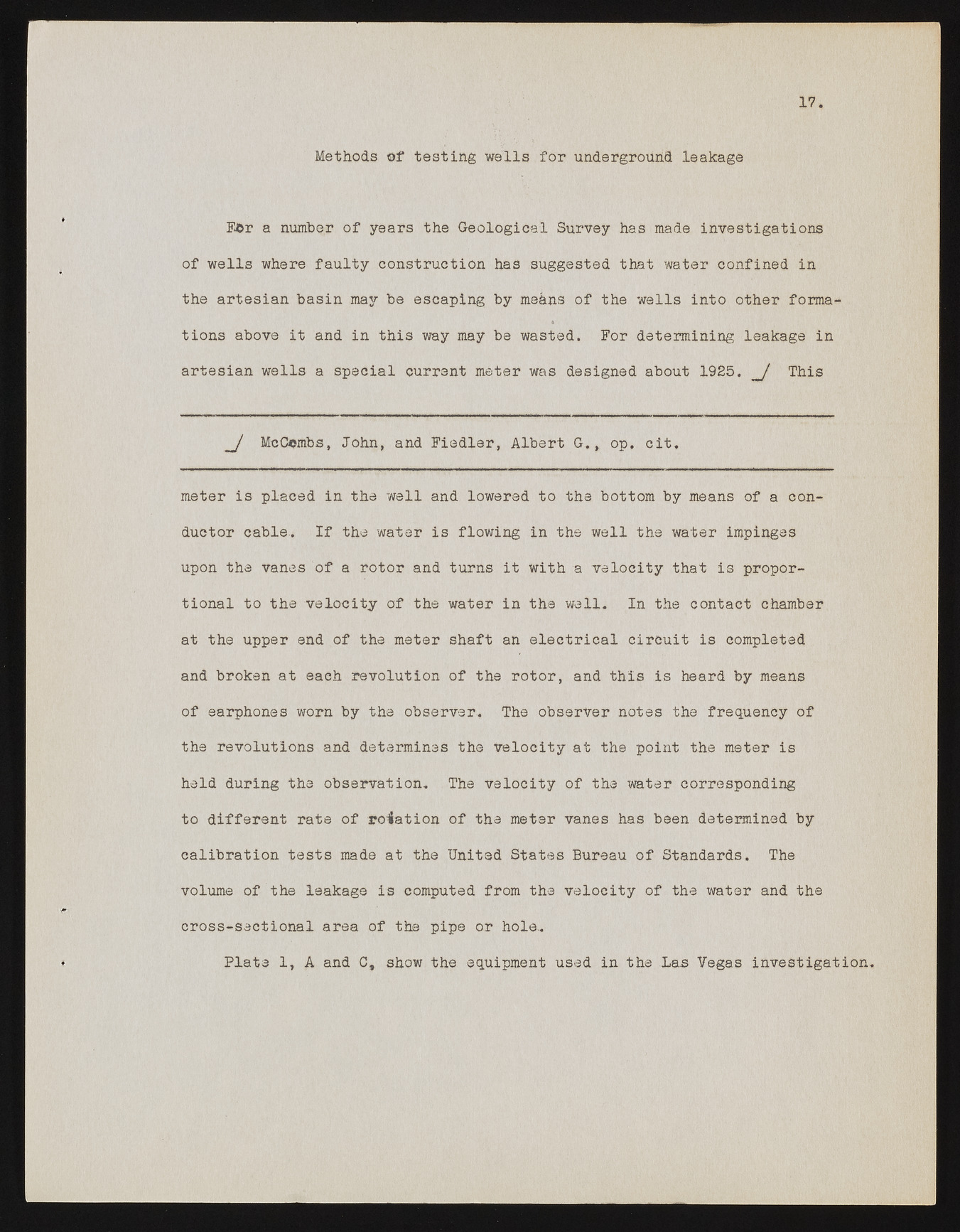Copyright & Fair-use Agreement
UNLV Special Collections provides copies of materials to facilitate private study, scholarship, or research. Material not in the public domain may be used according to fair use of copyrighted materials as defined by copyright law. Please cite us.
Please note that UNLV may not own the copyright to these materials and cannot provide permission to publish or distribute materials when UNLV is not the copyright holder. The user is solely responsible for determining the copyright status of materials and obtaining permission to use material from the copyright holder and for determining whether any permissions relating to any other rights are necessary for the intended use, and for obtaining all required permissions beyond that allowed by fair use.
Read more about our reproduction and use policy.
I agree.Information
Digital ID
Permalink
Details
Member of
More Info
Rights
Digital Provenance
Publisher
Transcription
17. Methods of testing wells for underground leakage Mr a number of years the Geological Survey has made investigations of wells where faulty construction has suggested that water confined in the artesian basin may be escaping by means of the wells into other formations above it and in this way may be wasted. For determining leakage in artesian wells a special current meter was designed about 1925. __/ This J McCombs, John, and Fiedler, Albert G., op. cit. meter is placed in the well and lowered to the bottom by means of a conductor cable. If the water is flowing in the well the water impinges upon the vanes of a rotor and turns it with a velocity that is proportional to the velocity of the water in the well. In the contact chamber at the upper end of the meter shaft an electrical circuit is completed and broken at each revolution of the rotor, and this is heard by means of earphones worn by the observer. The observer notes the frequency of the revolutions and determines the velocity at the point the meter is held during the observation. The velocity of the water corresponding to different rate of rotation of the meter vanes has been determined by calibration tests made at the United States Bureau of Standards. The volume of the leakage is computed from the velocity of the water and the cross-sectional area of the pipe or hole.. Plate 1, A and C, show the equipment used in the Las Vegas investigation.

